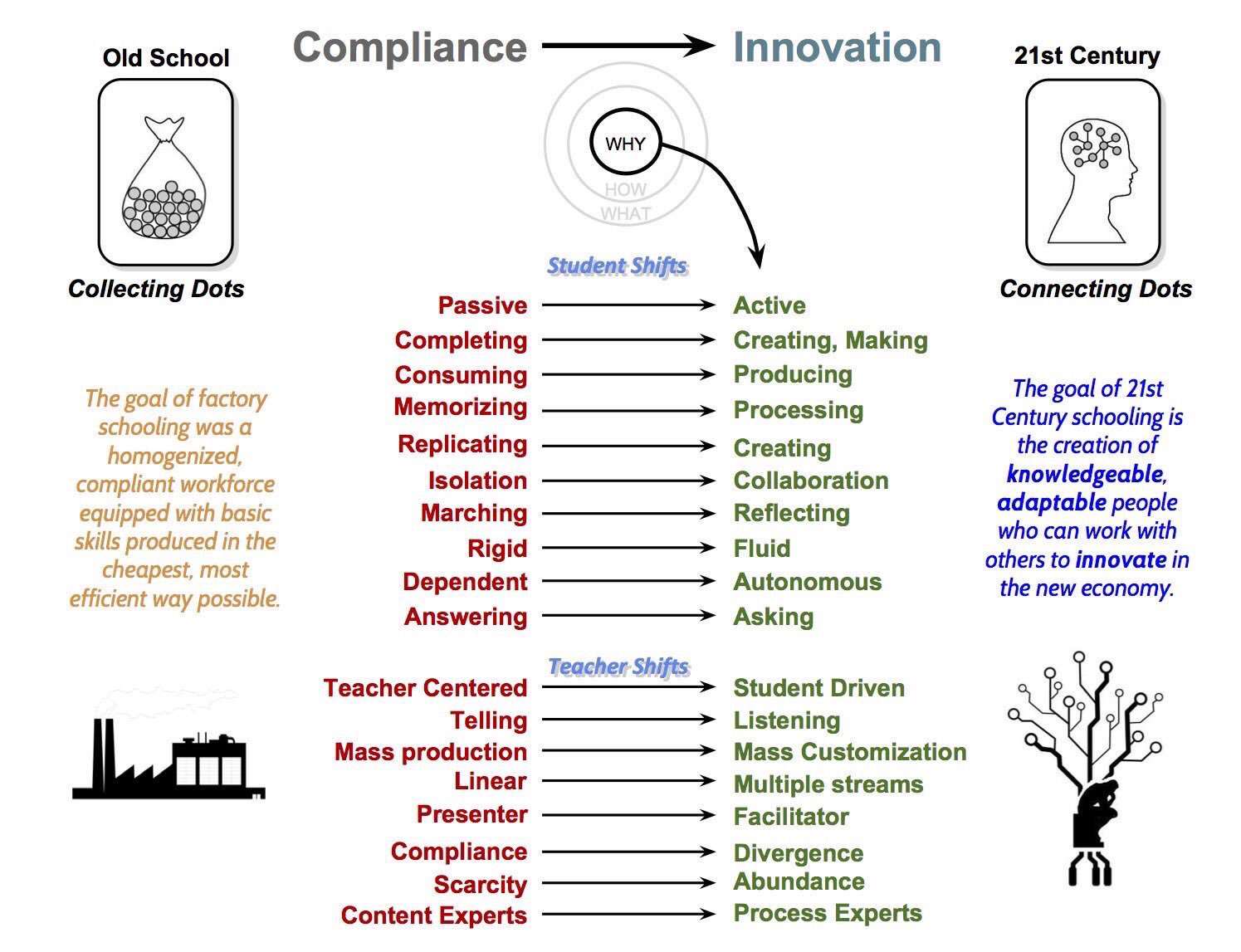The following blog was published in the Lethbridge Herald on January 25, 2017.
I recently came across a visual from Marzano Research that illustrated the differences between the old factory model of schooling and the new paradigm we are striving for in education in Alberta.

The old mentality had us simply collecting dots, placing high importance on content and compliance. Granted, for many years the factory model of schooling worked well, producing a compliant workforce that was well equipped with the basic skills needed to meet the job market of the time. Today, however, both the job market and the workforce are far more dynamic. As a result, schooling needs to be more than just collecting dots, but rather connecting the dots.
So, what does connecting the dots mean for our students? The new economy, whether it be local, provincial, national or international, requires that our students to be able to innovate. They need to be active in their learning, collaborative in their approaches, flexible and adaptable. Instead of consuming or replicating knowledge, which received high marks in the old system, students prepared for the future need to be able to produce and create. They need to be able to take content from one area and relate it to another. They need to ensure that their learning is based on commitment to and not compliance of.
Connecting the dots doesn’t mean that content is less important and does not imply a decrease in rigour. Rigour still needs to be maintained but a focus on relevance needs to be added. The learning of content cannot remain isolated. Instead it must become integrated and connected to real life. This may be uncomfortable for those of us who have already experienced “old school” learning, where specific subjects were offered in distinct blocks of time. However, when you really view learning in everyday life, you realize it is not isolated into separate units – it is fluid. Current efforts to link subjects through cross-disciplinary approaches simply make good sense to what we know about learning today.
Unfortunately, one of the difficulties in making that shift is that many of our assessments are structured for the old school model. It is easy to measure achievement in reading, writing and arithmetic, but simple assessments are unable to ascertain proficiency in competencies like creativity or collaboration. “Book smart” is only a fraction of what a student needs leaving school to be successful in this changing world. If we desire to truly connect the dots then alternative assessments, like performance assessments, must also be utilized. These types of assessments increase our ability to distinguish between what a student knows and what a student can do with what s/he knows.
This last statement is what business and industry leaders from across the country are looking for in high school graduates. Students must complete high school and, ultimately, post-secondary with an ability to adapt and innovate. They must be able to shift from simply collecting the dots to connecting them.

1 ping
[…] Click to view CEO/Superintendent Chris Smeaton’s Blog […]